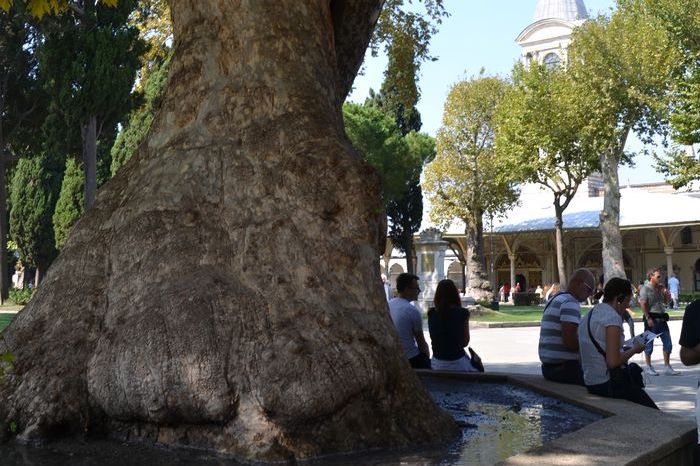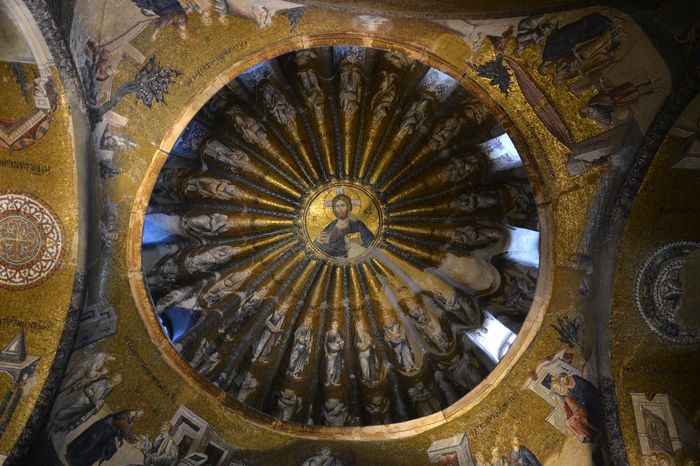Historians from Herodotus to Procopius recount ancient battles with discouraging sameness over most of 1,000 years, for good reason. Fortified vehicles are the most dramatic weapons any military force can bring onto a battlefield where forces oppose each other face to face, but they are regularly rendered obsolete. The war chariots of the early Iron Age, known in Egypt, in Persia, and at Rome, had proved no match for real cavalry, when the breeding and mastery of horse allowed mobility and agility to triumph over heavy machinery.
The ancient world gave the edge to cavalry. Greeks versus Persians in the fifth century BC and Romans versus “barbarians” in the sixth century CE were battles remarkably similar in appearance. The irreducible minimum of violence lay in brute force and blunt objects, parried by man-made shields and battlefield tactics. Sharpened iron weapons—swords and spears—had much greater power and did much greater damage, but were at risk of loss and destruction. The thrown spear, in particular, could return to its owner and do him damage.
Immense strength
On foot, men of immense strength, stolidity, and bravery—for by such qualities we must characterize the willingness to suffer privation on privation and the very great likelihood of ending by being hacked to death under the open sky or enslaved by more forgiving brutes—these were the cheapest and most reliable of forces. They needed food, weapons, and some faint prospect of retirement to small farms as a gift from their general. The life of the ancient soldiers was grim, and grimmer for the realization that some chose it over far worse private bosphorus tours.
Cavalry, the embodied power of the bow and arrow on horseback, took advantage of mobility and ingenuity to run rings around foot soldiers. The decisive difference in battle after battle in the ancient world lay in the intelligent deployment of numerically advantaged cavalry. Using the landscape of a well-chosen battlefield to give the cavalry its freedom made the difference between victory and defeat. In Africa in 533, Justinian’s wealth, the experience of his troops and officers, some intelligence in tactics, and a great deal of good luck carried the day.
The defeated Gelimer went to ground a few dozen miles west of Carthage and lurked there until Belisarius sent out the cavalry once again to pursue him in December, and a second battle, fought with equal timidity, won the day decisively for Belisarius. Belisarius’s forces had known warfare well, but the Vandals had been mainly peaceful for fifty years and more by this time. Such quietude does not produce warriors or generals. Gelimer retreated farther west himself and held out against capture a few months longer, finally surrendering in the spring of 534.
Belisarius returned to Constantinople
Belisarius returned to Constantinople from what appeared to be his greatest success, bringing along many prisoners. He was accorded the oldest of Roman honors, the triumph—a generous gift from the otherwise usually jealous emperor, Justinian. The site in these times was not the forum but the circus, the center of secular ritual in Constantinople. Gelimer followed Belisarius on foot, chained and to all appearances doomed. The official piety of the historian had Gelimer look about and quote Ecclesiastes (“Vanity of vanities, all is vanity”), but any sobriety of that sort was quickly undermined. Due diplomatic courtesy prevailed, and Belisarius offered the Vandal a fine estate in Galatia in central Asia Minor, there to live out his days as a private citizen. It is even said that Belisarius would have given his prisoner a grand title, but Gelimer refused to convert to Constantinople’s anti-Arian creed and so missed a chance at even greater dignity. Some of his troops reappear in the years afterward in one or another Roman battle on the eastern front Theodahad first shows up in the record.
The story told in Constantinople was that the treasures recovered included the golden vessels of Herod’s temple, supposedly seized by the emperor Titus at the sack of Jerusalem in 70 CE, then seized again in Rome in 455 by the Vandals. If we did not know that Justinian was well along in rivalry with Solomon on many fronts—in building Hagia Sophia in Constantinople and the great new church in Jerusalem—we might be more inclined to believe this tale.







